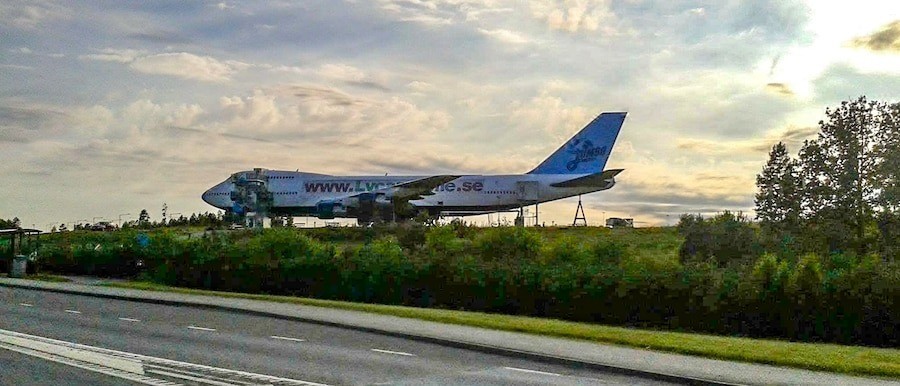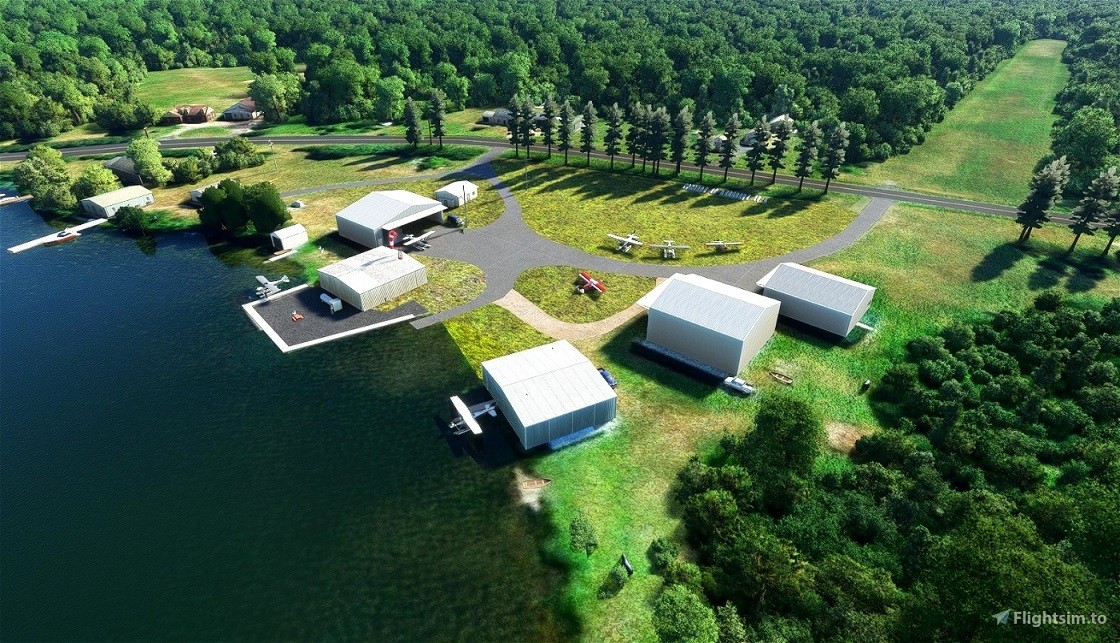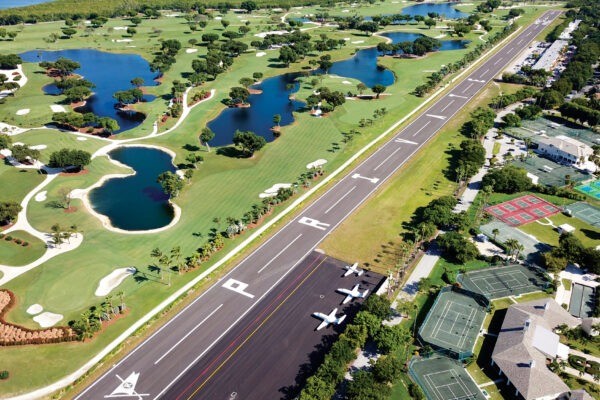Top 10 Smallest Airports in the US by Size: Tiny Terminals, Big Charm
While the United States is home to some of the world’s largest and busiest airports—like Hartsfield-Jackson in Atlanta or Denver International—there’s a quieter, often overlooked side of American aviation: its smallest airports. These compact hubs, some covering less than a few hundred acres, serve as vital lifelines for remote communities, scenic regions, and niche travelers seeking convenience over congestion.
In 2024, airports like Dawson Community Airport in Montana, covering just around 413 acres, or John Murtha Johnstown–Cambria County Airport in Pennsylvania, remind us that size isn't everything. Some of these airports record under 10,000 enplanements annually, yet remain critical for regional connectivity, emergency response, and economic activity. Despite their limited size, many offer modern amenities, general aviation services, and scenic approaches that rival those of larger airfields.
These airports often function as training grounds for pilots, bases for private aircraft, or gateways to outdoor adventures in national parks and wilderness areas. Whether nestled in rural towns or perched near coastal cliffs, the smallest airports in the U.S. embody the spirit of accessible air travel—efficient, essential, and often unexpectedly charming.
Learn more: Top 10 Largest Airports in the US by Area
 |
| Top 10 The Smallest Airports in The US |
Top 10 The Smallest Airports in The US
1. Dawson Community Airport (GDV), Montana
Area: Dawson Community Airport covers a small area with one runway, 5,700 feet in length, accommodating the regional air traffic of Dawson County.
Airlines: Cape Air provides commercial service, linking Dawson with Billings and other regional hubs as part of the Essential Air Service program.
Located near Glendive, Montana, Dawson Community Airport serves as a crucial access point for eastern Montana, offering both passenger and general aviation services. The airport is equipped with basic amenities and provides services such as car rentals and fuel facilities, catering primarily to the needs of local residents and businesses.
The service is generally efficient for its size, focusing on basic amenities and functionality. Passengers appreciate the convenience it offers within the region, including essential air service to larger hubs.
2. Moser Bay Seaplane Base (KMY), Alaska
Area: This seaplane base operates directly from the waters of Moser Bay, surrounded by Alaska's rugged terrain and accessible only by air or sea.
Airlines: As a seaplane base, KMY does not host traditional airlines but is utilized by various regional air taxi services that offer charter and scheduled flights.
Accessible only by water, KMY is crucial for residents and tourists exploring Alaska’s remote areas. It primarily supports seaplanes and is a vital link for fishing lodges and native communities, often unreachable by road or larger aircraft.
Moser Bay Seaplane Base is pivotal for transportation in an area where roads are non-existent. It supports the local fishing industry and provides vital connections for residents and tourists to Ketchikan and other parts of Alaska. The base is essential for supplying goods, transporting people, and in emergencies, acting as a lifeline for the isolated communities in the vicinity.
Given its unique operating environment, KMY provides vital services tailored to the needs of the local population and tourists visiting remote areas. The service is specialized and crucial, especially for access to remote locations.
3. Tatitlek Airport (TEK), Alaska
 |
| Tatitlek Airport (TEK), Alaska |
Area: Tatitlek Airport features a simple layout with a gravel runway approximately 1,850 feet long, suitable for small aircraft operations.
Airlines: There are no scheduled commercial airline services at TEK. Instead, the airport is primarily used by air taxis and private planes.
Another Alaskan entry, TEK is integral to the local community, providing a necessary link to the nearest cities and emergency services. Its gravel runway and minimal facilities underscore the essential nature of air travel in Alaska's vast landscapes.
Situated in the village of Tatitlek in Prince William Sound, this airport is crucial for the connectivity of its small, primarily Native community. It enables access to medical services, emergency response, and supplies from larger Alaskan cities. Despite its minimalistic infrastructure, the airport plays a vital role in community sustenance and connectivity in the challenging Alaskan landscape.
TEK offers minimal services, but it is adequate for the airport's role in serving a small community. The focus is on basic transportation needs rather than luxury or extensive amenities.
4. Mackinac Island Airport (MCD), Michigan
Area: Mackinac Island Airport features a single asphalt runway that is 3,500 feet long, accommodating general aviation and seasonal tourist flights.
Airlines: The airport does not host regular commercial airline service but is heavily utilized by private and charter flights, especially during the tourist season.
Located on Mackinac Island, where motor vehicles are banned, the airport is an essential part of the island’s transportation network. It provides a vital link for tourists and residents alike, offering picturesque aerial views of the island and Lake Huron. The airport also plays a critical role during emergencies, serving as the primary point for medical and supply transports.
MCD is well-regarded for its convenience and scenic location. The services are tailored to seasonal tourist traffic and include fundamental support for private and charter flights.
5. Metlakatla Seaplane Base (MTM), Alaska
Area: Metlakatla Seaplane Base operates directly from the waters adjacent to Metlakatla on Annette Island, providing crucial air service in an area surrounded by Alaska's vast wilderness.
Airlines: Similar to other seaplane bases in remote Alaskan regions, MTM is serviced by regional air taxi companies that offer chartered and some scheduled services.
As the only airport in Metlakatla, MTM is a seaplane-exclusive facility providing indispensable services to this island community, including mail delivery, passenger transport, and medical evacuations. It supports the local economy, facilitates medical and emergency responses, and enhances the community’s access to educational and other essential services.
MTM provides essential services to the Metlakatla community, focusing on basic but crucial transport links. It's well-regarded within its context, facilitating necessary connections and supplies.
Read More: Top 10 Largest Airports in the US by Area - 2024 Report
6. Sky Harbor Seaplane Base (DYT), Minnesota
 |
| Sky Harbor Seaplane Base (DYT), Minnesota |
Area: Sky Harbor Seaplane Base has a unique setting on Lake Superior, utilizing the lake itself for takeoffs and landings.
Airlines: The base is primarily used by private operators and air taxis, catering to the recreational and tourism sectors.
Located near Duluth, Minnesota, DYT is a gateway to the scenic beauty of Lake Superior and its surroundings. The base is particularly popular among anglers and outdoor enthusiasts, providing easy access to remote fishing spots and natural attractions. Its role is crucial during the summer months when the influx of tourists significantly increases. Situated in Duluth, DYT is unique for its exclusive operation of seaplanes. Serving the local fishing and recreational industries, it is a pivotal base during the region’s busy summer months.
DYT is appreciated for its recreational and tourism-oriented services, especially catering to outdoor and fishing activities. The service is specialized and generally seen as good for its niche.
7. Culebra Airport (CPX), Puerto Rico
Area: Culebra Airport, also known as Benjamin Rivera Noriega Airport, features a single runway approximately 2,600 feet in length, suitable for small aircraft operations.
Airlines: The airport is serviced by regional airlines like Cape Air and Air Flamenco, which provide regular scheduled flights to and from mainland Puerto Rico and the nearby Virgin Islands.
As one of the smallest airports serving the U.S. territories, CPX is essential for tourism and local transit, connecting the tiny island of Culebra with mainland Puerto Rico and the Virgin Islands.
CPX is essential for tourism on Culebra, one of Puerto Rico’s smaller islands known for its beautiful beaches and snorkeling spots. The airport facilitates the economic vitality of the island by supporting the tourism industry and providing residents with a critical link to the main island, enhancing access to healthcare, education, and mainland job markets.
CPX is crucial for tourism and local transit, providing reliable service to connect the island with larger urban centers. The airport is small but efficient in managing its operations, which are vital for the island's connectivity.
8. Pine Mountain Lake Airport (E45), California
Area: Pine Mountain Lake Airport encompasses a modest area with a single asphalt runway approximately 3,600 feet in length, tailored for light aircraft and private aviation.
Airlines: E45 does not host scheduled airline services but is open to public use, predominantly serving the aviation needs of the Pine Mountain Lake community and private pilots.
Situated in the Sierra Nevada foothills near Groveland, California, Pine Mountain Lake Airport serves a primarily residential community but is also a popular destination for recreational pilots and visitors to nearby Yosemite National Park. The airport features basic aviation services and offers scenic views of the surrounding landscapes, making it a favored spot for flying enthusiasts in the region.
E45 is popular among flying enthusiasts and offers adequate facilities for private aviation. The services are considered good, especially for recreational flying and access to nearby attractions.
9. Frenchville Airport (FVE), Maine
Area: Frenchville Airport, also known as Northern Aroostook Regional Airport, has a single asphalt runway that stretches 3,000 feet, accommodating mainly general aviation.
Airlines: There are no regular commercial airline services at FVE. The airport primarily supports general aviation and is used occasionally by charter flights.
Located in the town of Frenchville in northern Maine, close to the Canadian border, this airport is crucial for the local community, providing access to larger cities for business, medical needs, and personal travel. Despite its small size, FVE plays a vital role in maintaining the connectivity of this remote area, supporting economic stability and emergency response capabilities.
The services at FVE are basic but sufficient for the needs of the local community and occasional charter operations. It's valued for maintaining regional connectivity and providing access in emergencies.
10. Ocean Reef Club Airport (07FA), Florida
 |
| Ocean Reef Club Airport (07FA), Florida |
Area: Ocean Reef Club Airport is a private airport located within the Ocean Reef Club gated community, featuring a single runway approximately 4,456 feet long.
Airlines: As a private facility, 07FA does not support scheduled commercial service but is available exclusively to club members and their guests, often catering to private jets and chartered flights.
Situated at the northern tip of Key Largo, Florida, this airport provides a high level of convenience and exclusivity to residents and visitors of the Ocean Reef Club, one of the most secluded and luxurious communities in the U.S. The airport supports a range of private aircraft and offers services tailored to affluent travelers, including quick access to the club’s amenities like golf courses, marinas, and private residences. This airport is key to the lifestyle and logistical needs of its community, enhancing the exclusive experience of the Ocean Reef Club.
This private airport offers high-quality, tailored services to meet the exclusive needs of its affluent clientele. The level of service is considered excellent, aligning with the luxury and exclusivity of the Ocean Reef Club.
What Challenges Are These Airports Facing?Financial ViabilitySmall airports often have fewer flights and passengers, which translates to limited revenue from airline fees, parking, retail, and other services. This can make it difficult to cover operational costs and invest in infrastructure improvements. Many small airports rely on government subsidies, such as those provided under the Essential Air Service (EAS) program in the U.S., to remain operational. Changes in policy or funding levels can directly threaten their viability. Infrastructure and MaintenanceSmaller airports may struggle with aging infrastructure and may not have the financial resources to invest in upgrades or expansions needed to accommodate new technologies or larger aircraft. Regular maintenance can be disproportionately expensive for smaller airports due to lower economies of scale. Market and Service ChallengesConvincing airlines to operate from smaller airports can be difficult, especially if the passenger demand is low. Without enough demand, airlines may not find it economically feasible to maintain routes. Smaller airports often compete with larger ones for routes and airlines, and passengers might opt for larger airports that offer more frequent services and connectivity. Technological AdvancementsImplementing the latest aviation, security, and operational technologies can be costly and complex for smaller airports. As the industry moves towards more digital solutions for everything from ticketing to passenger management, small airports might struggle to keep up due to limited IT infrastructure and expertise. Geographical and Seasonal LimitationsAirports in remote or difficult-to-reach locations may face challenges related to accessibility, especially during adverse weather conditions, which can disrupt services more frequently. Airports that rely heavily on seasonal traffic (e.g., tourist destinations) face the challenge of maintaining operations and cash flow during the off-season. |
Conclusion
These airports, though small, play a pivotal role in the communities they serve, providing not only travel conveniences but also crucial lifelines during emergencies. They exemplify the broad spectrum of American aviation, from remote rural airstrips to luxury resort landings, reflecting the unique demands and beauty of each locale.
 Top 8 Biggest Ambulance Services in the US - 2024 Report Top 8 Biggest Ambulance Services in the US - 2024 Report When every second counts in medical emergencies, air ambulance services offer a lifeline for individuals who require immediate medical assistance. With the increasing demand for ... |
 Top 10 Best-Selling Gun Brands in the US - 2024 Report Top 10 Best-Selling Gun Brands in the US - 2024 Report Several American firearm brands have led innovation and craftsmanship in the ever-changing industry. Today, we examine the top 12 gun brands that dominate the market ... |
 Top 9 Biggest Hedge Funds in the US Today Top 9 Biggest Hedge Funds in the US Today In this post, we'll look at 9 of the largest hedge funds in the United States. Let's check it out! |


























